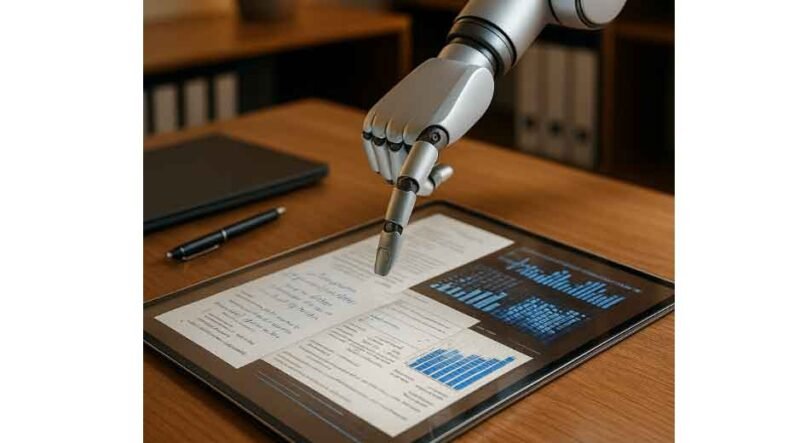Introduction
In today’s rapidly evolving business environment, the tools that power our daily workflows must do more than just follow instructions—they need to understand, adapt, and deliver results with precision. This article discusses how modern platforms have started to bridge routine operations with intelligent decision‑making. Through real‑world examples and clear insights, it outlines how contemporary automation tools are reshaping efficiency, accuracy, and workforce focus across industries.
Breaking the Mold: From Rules to Reasoning
Traditional automation excels at predictable, rule‑based tasks. But many of the most time‑consuming work processes, such as extracting information from varied documents or responding to inquiries with context, fall into the semi‑structured or unstructured category. The evolution of automation technologies means that it no longer stops at repetitive sequences—it now processes, interprets, and responds with nuanced understanding. The result is automation that learns, adapts, and expands its usefulness beyond what was previously imaginable.
Expanding Capabilities with Intelligent Integratio
A growing class of platforms now combines RPA with artificial intelligence techniques—machine learning, natural language processing, computer vision, and even generative models—to navigate and make sense of variable data sources. This blend enables seamless handling of both structured and unstructured information, from invoices and emails to images and conversation logs. In many enterprises, ai automation systems have delivered up to 99% accuracy in medical documentation, streamlined high-volume email workflows, and cut costs in quality control applications—while offering scalable governance and enterprise‑grade security.
By leveraging unified, end‑to‑end structures—rather than stitching together discrete tools—organizations can maintain compliance, traceability, and orchestration across their intelligent workflows. This cohesive approach underscores the value of choosing fully integrated platforms to ensure reliability, efficiency, and growth.
Real-World Impact: Efficiency in Action
Consider a firm in healthcare revenue processing. With a major automation platform’s document‑understanding capability, they transformed laborious manual tasks into automated flows. The system now extracts data from claim forms and correspondence with 99.5% accuracy, slashing documentation time by 40%, halving turnaround time, and saving over 15,000 employee hours per month—all while yielding a 30% return on investment. This shift moves human roles from repetitive data handling to more valuable decision-making and oversight.
In public administration, an agency used intelligent robots to handle fund applications efficiently—automating document retrieval and cutting processing days dramatically. With thousands of applications and billions in funding handled successfully, the technology freed staff to focus on more meaningful, citizen‑facing tasks.
Planning Your Own Journey Toward Smarter Operations
To start reaping these benefits, organizations should consider a phased roadmap:
- Discover: Use analytics and task-mining tools to identify high-ROI workflows.
- Pilot: Apply intelligent tools selectively—for example, to invoice intake or customer inquiry processing.
- Evaluate: Measure gains in accuracy, speed, and employee impact.
- Scale: Expand systems thoughtfully, ensuring governance, auditability, and employee adoption.
- Evolve: Continuously refine, adding agents or models that adapt and respond to shifting contexts and data types.
This method ensures solid foundations and scalable results, rather than risky, piecemeal technology bets.
Benefits That Matter
Blending automation with AI unlocks several key advantages:
- Significant Productivity Gains: Speed up processing while maintaining or improving accuracy.
- Cost Savings: Reduce manual hours and error-related work, freeing resources for strategic tasks.
- Elevated Workforce Focus: Empower employees to engage in creative, decision-based roles instead of routine work.
- Improved Customer Experience: Faster response times and fewer mistakes translate to better service and satisfaction.
Navigating the Ecosystem: A Word on Agent-Driven Dynamics
Some platforms now support “agent-based” or autonomous workflows—systems that interpret, decide, and act under overarching orchestration. These intelligent agents team up with human workers and bots, advancing beyond interpret-and-execute processes toward more adaptive, context-aware workflows. They exemplify how newer ai automation tools can work alongside established systems, extending intelligence without sacrificing stability or governance.
Yet, despite the sophistication of these agents, reliable, integrated automation remains vital. It ensures that tasks demanding structure and precision stay grounded, while intelligent tools enhance and extend automation’s reach rather than replace its foundation. The result is a symbiotic system: stable, efficient, and increasingly intelligent.
Looking Ahead: From Insight to Action
As generative AI and agent-based systems continue to evolve, successful organizations will be those that integrate intelligence into their established automation practices. By doing so, they build resilient workflows that guide operations—from structured tasks through smart interpretation to autonomous execution—all while preserving governance, auditability, and trust.
Whether it’s streamlining a pantry of internal processes or reimagining how work gets done across a business, intelligent integration is the key to unlocking productivity, reclaiming staff time for meaningful work, and maintaining control at scale.









